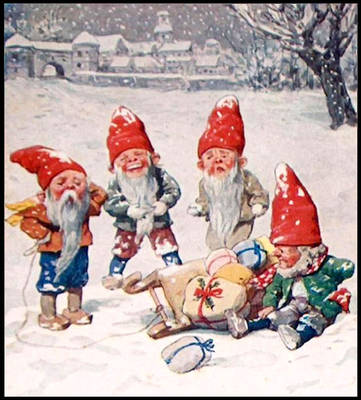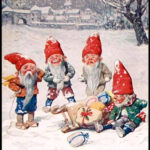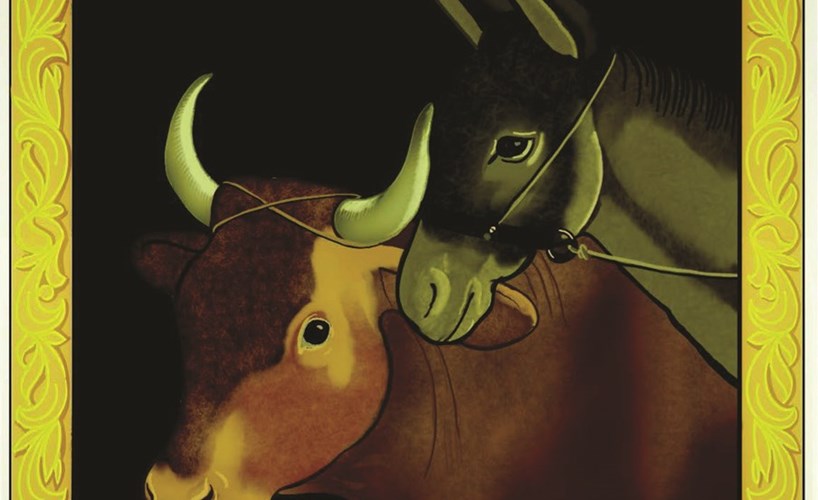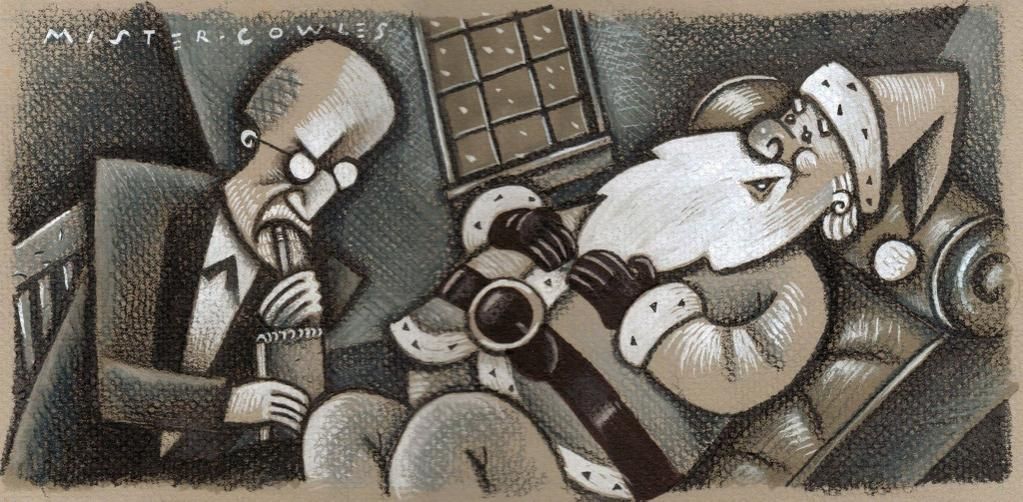
Small supernatural creatures who are now associated with Christmas through the notion that they constitute Santa’s Helpers at the North Pole and in department stores where he is seen.

They were not always so benign. They originated in the Scandinavian nisser and tomten, farm- or house-elves who could be helpful if bribed but malicious if they were slighted, especially at Christmas when, as in Denmark, a bowl of milk must be left out for them. In the second half of the nineteenth-century the reputation of elves began to change for the better as part of a drive to make Christmas more child-centred. An 1859 poem in Harper’s Weekly speaks of Santa Claus keeping “a great many elves at work,/ All working with all their might,/ To make a million of pretty things…”
Perhaps no country is as mindful of elves at Christmas than Iceland where there is a rich folklore tradition about these supernatural creatures and how to keep on their good side during the long winter nights. It is believed that elves move house every New Year’s. It was possible, though dangerous, to obtain gold from them at this time if their moving was interrupted but most chose merely to pacify them. Housewives on Christmas could obtain their goodwill by chanting on New Year’s Eve: “Let those who want to, arrive;/ Let those who want to, leave;/ Let those who want to, stay/ Without harm to me or mine.”








